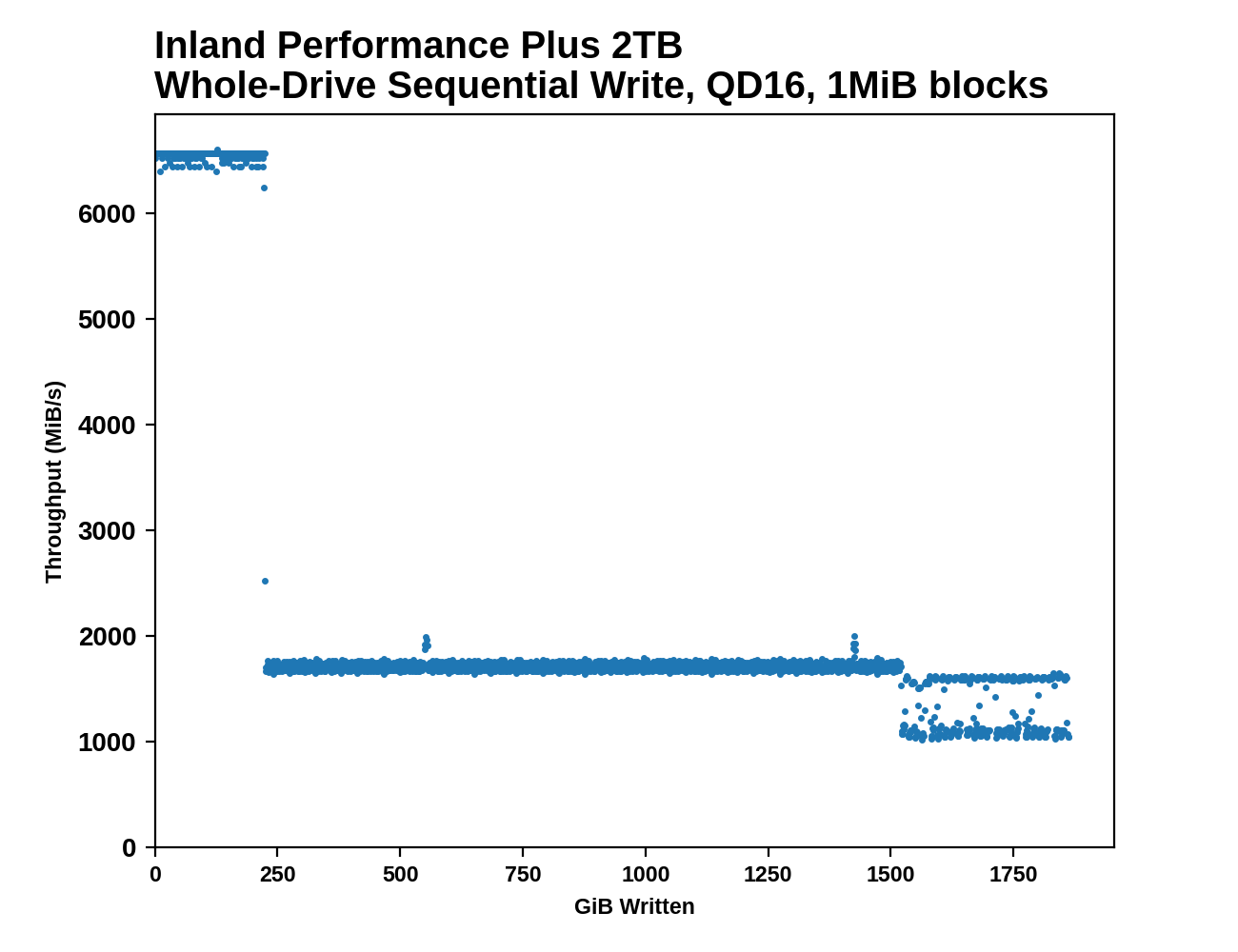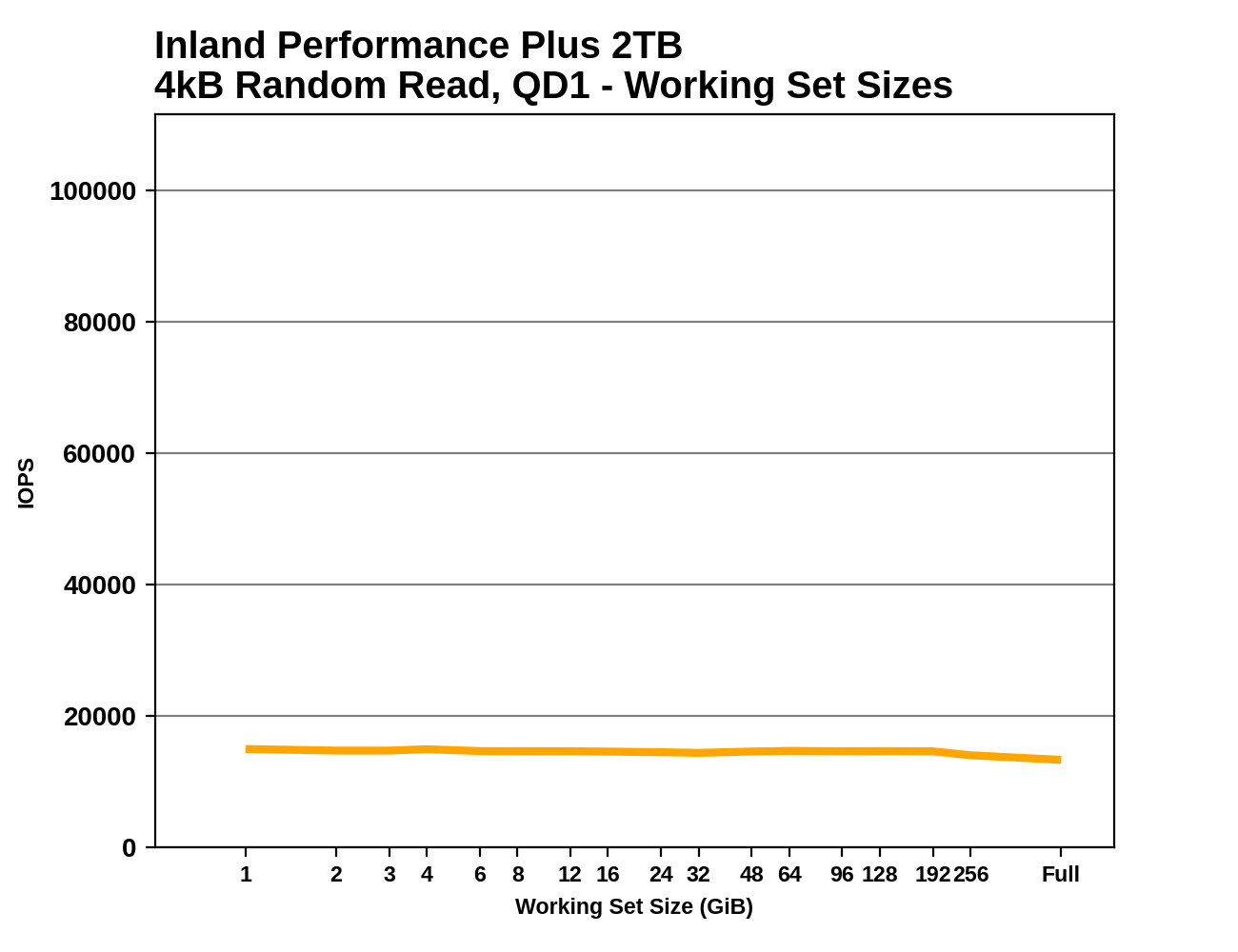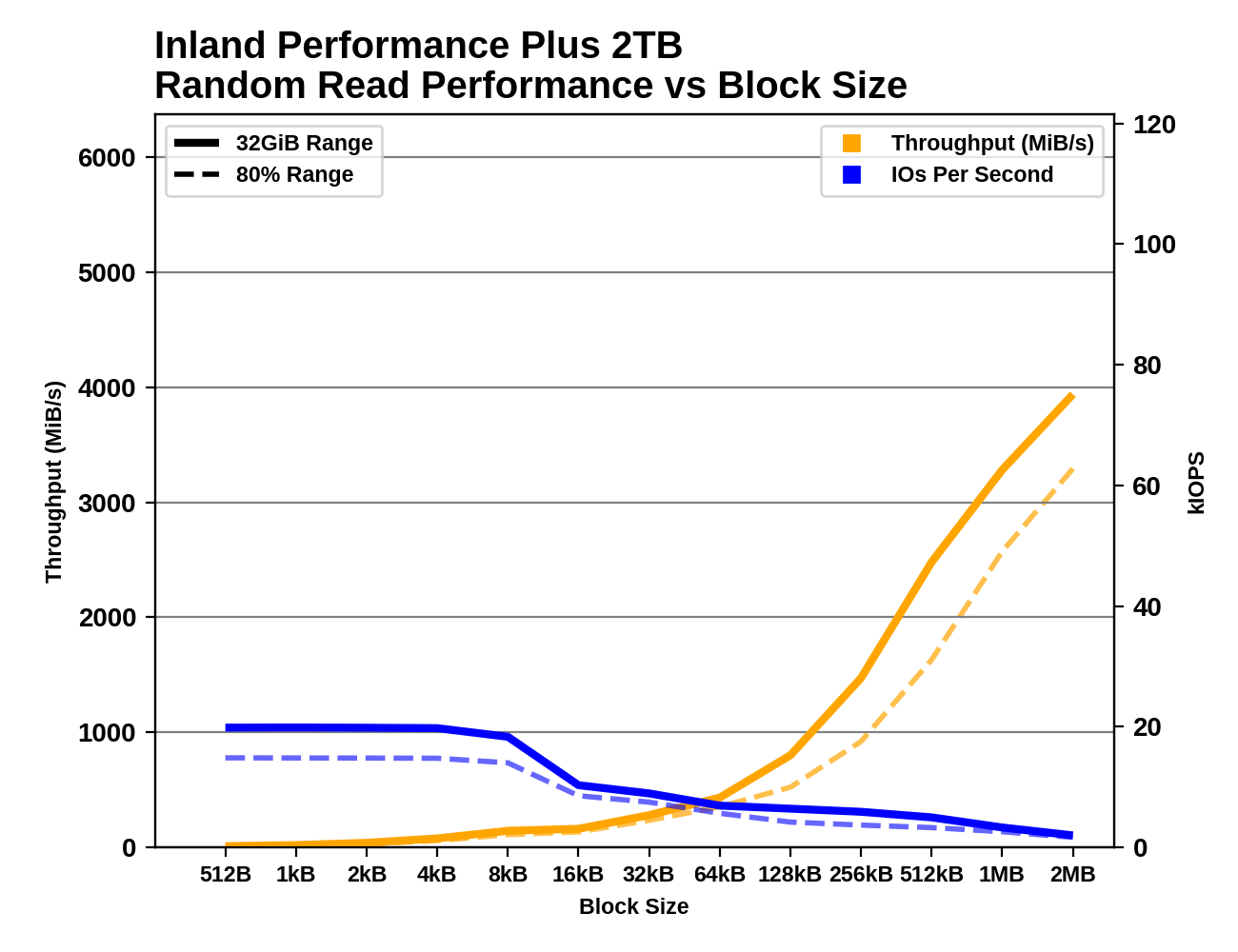The Inland Performance Plus 2TB SSD Review: Phison's E18 NVMe Controller Tested
by Billy Tallis on May 13, 2021 8:00 AM ESTAdvanced Synthetic Tests
Our benchmark suite includes a variety of tests that are less about replicating any real-world IO patterns, and more about exposing the inner workings of a drive with narrowly-focused tests. Many of these tests will show exaggerated differences between drives, and for the most part that should not be taken as a sign that one drive will be drastically faster for real-world usage. These tests are about satisfying curiosity, and are not good measures of overall drive performance. For more details, please see the overview of our 2021 Consumer SSD Benchmark Suite.
Whole-Drive Fill
 |
|||||||||
| Pass 1 | |||||||||
| Pass 2 | |||||||||
The SLC write cache on the 2TB Inland Performance Plus lasts for about 225GB on first pass (about the same cache size as 980 PRO, but a bit faster), and about 55GB on the second pass when the drive is already full. Performance during each phase of filling the drive is quite consistent, with the only significant variability showing up after the drive is 80% full. Sequential write performance during the SLC cache phase is higher than any other drive we've tested to date.
 |
|||||||||
| Average Throughput for last 16 GB | Overall Average Throughput | ||||||||
The post-cache performance is a bit slower than the fastest TLC drives, but overall average throughput is comparable to other top TLC drives. The Inland Performance Plus is still significantly slower than the MLC and Optane drives that didn't need a caching layer, but one or two more generational improvements in NAND performance may be enough to overcome that difference.
Working Set Size
 |
|||||||||
As expected from a high-end drive with a full-sized DRAM buffer, the random read latency from the Inland Performance Plus is nearly constant regardless of the working set size. There's a slight drop in performance when random reads are covering the entire range of the drive, but it's smaller than the drop we see from drives that skimp on DRAM.
Performance vs Block Size
 |
|||||||||
| Random Read | |||||||||
| Random Write | |||||||||
| Sequential Read | |||||||||
| Sequential Write | |||||||||
There are no big surprises from testing the Inland Performance Plus with varying block sizes. The Phison E18 controller has no problem handling block sizes smaller than 4kB. The random write results are a little rough especially when testing the drive at 80% full, but it's hardly the only drive to have SLC cache troubles here. Like many other drives, the sequential read performance doesn't scale smoothly with the larger block sizes, and the drive really needs a larger queue depth or very large block size to deliver great sequential read performance.










118 Comments
View All Comments
GeoffreyA - Friday, May 14, 2021 - link
By the way, methinks the worst nightmare was ME.Spunjji - Monday, May 17, 2021 - link
@GeoffreyA - agreed, it was somehow even worse than the first release of 98.mode_13h - Tuesday, May 18, 2021 - link
Lucky for me, I skipped all the bad Windows releases: 98, ME, Vista, and Win 8.I went 95 -> NT 4 -> 2k -> XP -> 7 -> 10.
sonny73n - Friday, May 14, 2021 - link
There's nothing pretty about Windows 10. Just more and more malicious codes aka spywares added for Big Brother.Mdarrish - Friday, May 14, 2021 - link
It’s the old classic: Intel (and even more so now, AMD) giveth and Microsoft taketh away. If they would stick to making a better operating system, they might be able to reduce the bloat and giveth back. They never will do that, of course. They are too busy trying to kill off anything remotely resembling a competitor to any of their products to put out the best products.GeoffreyA - Friday, May 14, 2021 - link
Don't worry. Intel and AMD will raise performance, and software developers will take it back in no time.pSupaNova - Saturday, May 15, 2021 - link
Total rubbish, try out WSL 2 and then repeat what you just said with a straight face. Windows 10 is a powerhouse of an operating system!Billy Tallis - Saturday, May 15, 2021 - link
How is WSL 2 any kind of argument in favor of Windows? It only exists because Microsoft couldn't fix all the fundamental Windows problems that were getting in the way of WSL 1 working well, so they had to switch to a full VM instead.mode_13h - Saturday, May 15, 2021 - link
Microsoft is now less focused on being anti-competitive and more focused on selling cloud services and harvesting its users' data.Contrary to my experience on Win 7, I've hated every minute of 10. It's far more heavy-weight and the instability problems never end.
My previous approach to Windows upgrades was to wait until a couple service packs got released and things generally settled down. With Windows 10, you cannot do that. They basically force you to take their rolling releases.
And I don't know what they're adding in these releases, but I know most of it is of no benefit to me. It's all just so much spy-ware and support for cloud services that I don't want or need.
GeoffreyA - Sunday, May 16, 2021 - link
That's the bad part about 10, all the cloud nonsense they're trying to force onto people and things running in the background. At any rate, ShutUp10 is a nice tool that can help to curtail some of that; and from an aesthetic point of view, to get it looking more like < Windows 8, I installed Open-Shell, which re-creates the classic Start menu. Also got rid of that search box from the taskbar, brought back Quick Launch, sent Cortana into exile, renamed "This PC" to "My Computer," minimised the Ribbon, and it feels almost like home again :)